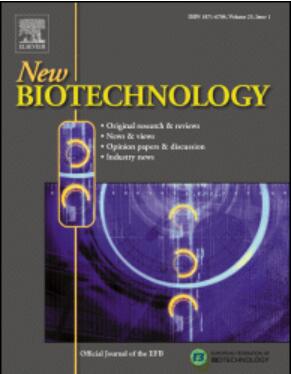Cultivation at a liquid–liquid interface prevents phenotypic heterogeneity of human induced pluripotent stem-derived retinal pigment epithelial cells
IF 4.9
2区 生物学
Q1 BIOCHEMICAL RESEARCH METHODS
引用次数: 0
Abstract
Culturing retinal pigment epithelial (RPE) cells, a valuable source for drug discovery and cell transplantation therapies, on a polystyrene solid interface often induces spontaneous phenotypic heterogeneity, including cobblestone-shaped, dome-shaped, and stratified cells within a passaged cell population. Understanding and regulating these phenotypic changes is essential for producing high-quality and safe cell sources. In this study, we developed a cultivation strategy to promote the uniform maturation of human induced pluripotent stem (hiPS)-derived RPE cells by focusing on their behavior in a culture vessel. hiPS-RPE cells cultured at the solid–liquid interface exhibited phenotypic heterogeneity, characterized by cobblestone, dome-shaped, and stratified morphologies, indicating RPE phenotype shifts associated with cellular senescence. However, replacing the Rho-associated coiled-coil kinase (ROCK) inhibitor Y27632 with forskolin, which enhances cell-cell and cell-substrate adhesion, facilitated uniform maturation of confluent hiPS-RPE cells on a laminin-332-coated liquid–liquid interface. Quantitative analysis revealed that the levels of tight junction formation, FZ, and the homogeneity index, i.e., the degree of uniform cell distribution, HLN, were consistent between the central and peripheral regions of the culture vessel (FZ = 0.97, HLN = 0.95). These findings highlight the importance of using a liquid–liquid interface to suppress spontaneous phenotypic heterogeneity by promoting uniform cell distribution. Our study presents a novel methodology for efficiently achieving uniform maturation of functional hiPS-RPE cells at the liquid–liquid interface within a culture vessel.
在液-液界面培养可防止人诱导的多能性干源性视网膜色素上皮细胞的表型异质性。
在聚苯乙烯固体界面上培养视网膜色素上皮细胞(RPE)是药物发现和细胞移植治疗的重要来源,通常会诱导自发的表型异质性,包括传代细胞群中的鹅卵石状、圆顶状和分层细胞。了解和调节这些表型变化对于生产高质量和安全的细胞来源至关重要。在这项研究中,我们开发了一种培养策略,通过关注人类诱导多能干细胞(hiPS)-RPE细胞在培养容器中的行为来促进它们的均匀成熟。在固液界面培养的hiPS-RPE细胞表现出表型异质性,其特征为鹅卵石状、圆顶状和分层形态,表明RPE表型变化与细胞衰老相关。然而,用forskolin替代rho相关的coil -coil kinase (ROCK)抑制剂Y27632,可以增强细胞-细胞和细胞-底物的粘附,促进融合的hiPS-RPE细胞在lamin332包被的液-液界面上均匀成熟。定量分析结果显示,培养容器中央和周围区域的紧密连接形成水平FZ和均匀性指数(即细胞均匀分布程度HLN)一致(FZ = 0.97, HLN = 0.95)。这些发现强调了使用液-液界面通过促进均匀细胞分布来抑制自发表型异质性的重要性。我们的研究提出了一种新的方法,可以在培养容器内的液-液界面上有效地实现功能性hiPS-RPE细胞的均匀成熟。
本文章由计算机程序翻译,如有差异,请以英文原文为准。
求助全文
约1分钟内获得全文
求助全文
来源期刊

New biotechnology
生物-生化研究方法
CiteScore
11.40
自引率
1.90%
发文量
77
审稿时长
1 months
期刊介绍:
New Biotechnology is the official journal of the European Federation of Biotechnology (EFB) and is published bimonthly. It covers both the science of biotechnology and its surrounding political, business and financial milieu. The journal publishes peer-reviewed basic research papers, authoritative reviews, feature articles and opinions in all areas of biotechnology. It reflects the full diversity of current biotechnology science, particularly those advances in research and practice that open opportunities for exploitation of knowledge, commercially or otherwise, together with news, discussion and comment on broader issues of general interest and concern. The outlook is fully international.
The scope of the journal includes the research, industrial and commercial aspects of biotechnology, in areas such as: Healthcare and Pharmaceuticals; Food and Agriculture; Biofuels; Genetic Engineering and Molecular Biology; Genomics and Synthetic Biology; Nanotechnology; Environment and Biodiversity; Biocatalysis; Bioremediation; Process engineering.
 求助内容:
求助内容: 应助结果提醒方式:
应助结果提醒方式:


